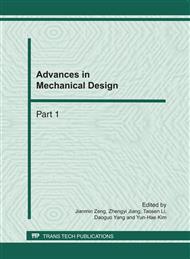p.874
p.878
p.882
p.886
p.891
p.895
p.899
p.905
p.909
Decoupling Free Vibration System of Bridge Section Model
Abstract:
In the paper the free vibration system of bridge section model is designed in order to measure the wind-induced effects on the bridge section model in the wind tunnel. In the system the suspension device is constituted with decoupling sliding components and simple spring suspension. Meanwhile, a set of data measurement and acquisition device based on the Labview is provided in the system. The measurement on the wind-induced static force, flutter and vortex-induced vibration of the bridge section model can be conducted at single degree of freedom or multiple degrees of freedom.
Info:
Periodical:
Pages:
891-894
Citation:
Online since:
February 2011
Authors:
Keywords:
Price:
Сopyright:
© 2011 Trans Tech Publications Ltd. All Rights Reserved
Share:
Citation:


